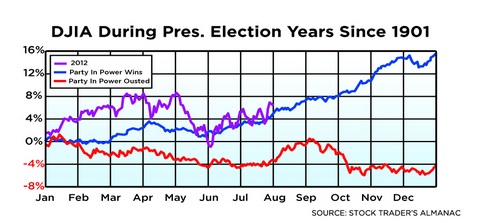The stock market today is quiet on low volume but there are plenty of profits to be found since investors are still hopeful that central banks in Europe and the U.S. are ready to act.
Meanwhile, here are two well-known retail stocks that are headed in opposite directions today.
One is dropping, while the other–Urban Outfitters (URBN)–is up nearly 20% on the day.
Not surprisingly, the retailer headed to the downside is Best Buy Co Inc. (NYSE: BBY).
The retail electronics giant reported that its second-quarter profit plummeted more than 90% from the year earlier quarter showing the difficulties newly appointed Chief Executive Officer Hubert Joly faces in turning around the company.
The world's largest consumer electronics chain announced net income of $12 million, or 4 cents a share compared to $128 million, or 34 cents, a year earlier. Excluding previously announced restructuring charges, earnings were 20 cents a share. Analysts on average were expecting 31 cents.
Sales fell 3% to $10.55 billion, while analysts had forecast $10.63 billion. Sales at stores open at least 14 months fell 3.2% in the second quarter ended on August 4, including a 1.6% decline in the U.S. and an 8.2% drop internationally. Gross margins also fell more than 1% as Best Buy used more discounts to lure in customers.
"This is really a bad signal about the business, implying much more promotion than in the past," Michael Pachter, an analyst at Wedbush Securities in Los Angeles, emailed Bloomberg. He rates Best Buy neutral. "The factors leading to the decline don't look like they're going to decline any time soon."
Hubert Joly was appointed CEO just yesterday and will try to transition the company towards smaller stores while continuing to deal with founder and former chairman Richard Schulze's attempt to take the company private.

